Roasted Salsa Recipe
Small and big batch recipes for eating now, canning, or freezing

If you'd like to skip the step-by-step tutorial and go straight to the recipes, click below.
a small batch to refrigerate and eat within 2 weeks:
Roasted Salsa recipe (small batch)
a large batch suitable for canning:
Awhile back, I shared my quick Fast & Easy Fire Roasted Salsa that you can make using canned ingredients in under 10 minutes. It's good and so easy to make; I make that one often when we're entertaining a crowd.
When I have the time and fresh ingredients are available, today's recipe is the one I make. It's my favorite salsa and the only one King-Man will eat. He loves this stuff. Roasting the garden-fresh veggies gives them fantastic flavor.
I'm sharing two different printable versions of this roasted salsa: (1) a small 3-cup batch that can be made and held in the fridge for up to two weeks; and (2) a big 6-pint batch that is suitable for canning. Either version may be frozen. This is the fifth year I've canned this recipe. I recently canned approx. 80 half-pint jars; hopefully enough to get us through until this time next year. Yes, we eat a lot of salsa in our house. I make a hot batch for me and a mild batch for King-Man. Jars of this salsa are my go-to hostess gift throughout the year, too.
I've been promising this recipe for awhile. Sorry to those of you who have been patiently waiting for it. This is a long post, since I'm including 2 recipes. So, here we go...
Step-by-step photos for making Roasted Salsa
Step 1. Assemble the ingredients (exact quantities may vary from the photo, depending on the batch size you are making): tomatoes, Anaheim chiles, jalapenos, roma/plum tomatoes, onion, garlic, ground cumin, oregano (preferably Mexican), kosher salt, ground pepper, cider vinegar, lime juice
- About the lime juice: I recommend fresh lime juice if you're eating this fresh or freezing it. However, if you're canning the salsa you must use bottled lime juice. This is because the pH of fresh limes can vary; bottled lime juice has a consistent pH that makes it more reliable for canning safety.
- About the tomatoes: I prefer Romas (plums) because they have a firm texture and are less juicy than other tomatoes. You can substitute different tomatoes, however your salsa will probably be thinner. In that case, you can cook off some of the liquid for a thicker salsa. For information about tomato equivalents and substitutions, click here.
view on Amazon: Mexican oregano, organic cumin
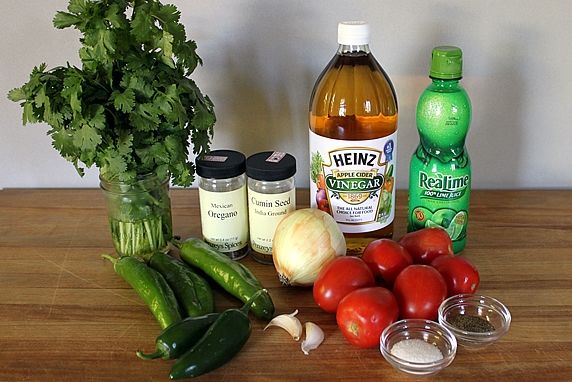
- About the chiles: I use Anaheims, because they are widely available in our local grocery stores here in St. Louis. You can substitute other long green chiles; some places have "New Mexico chiles," and they are similar. Hatch chiles are the best, if you can find them. Poblanos will work, too. The heat can vary widely between different chiles; even two of the same variety can have vastly different levels of heat. I taste and make adjustments with every new batch I make.
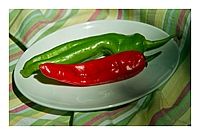
I have a blogger friend at MJ's Kitchen from my home state of New Mexico who has a series on chiles. If you have a burning (pun intended!) desire to learn more about chiles, check out MJ's blog. It's loaded with great information and recipes.
Below are the 4 Anaheim chiles and 1 jalapeno that I used in this batch of salsa. Chiles can vary widely in size, so the most accurate way to determine how many chiles you need is to weigh them. If you don't have a scale at home, weigh them at the grocery store or produce market. For this recipe, you need approx. 1/2 pound of combined chiles. This jalapeno was a big boy, so I only used one. I use 2 if they're small. 3 Anaheims are usually about right; but this year they've been smaller so I used 4.
view on Amazon: kitchen scale (rated #1 by Cooks Illusrated)
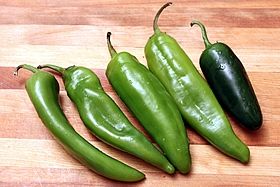
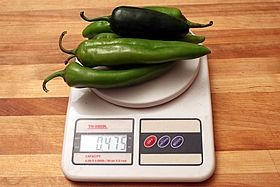
I weigh the tomatoes, too, for the same reason--sizes vary widely. You need approx. 2 pounds of tomatoes.
Step 2. Core the tomatoes (I just chop off the core end) and cut them in half.
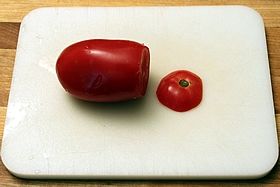
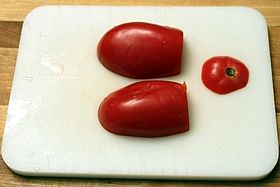
Step 3. Arrange the tomatoes, cut side down, on a large baking sheet, along with the peppers, garlic cloves, and cut-up onion.
Step 4. Roast the tray at 450 degrees for approx. 30 minutes, until the tomato and chile skins are blistered and partially blackened.
If you prefer a fire-roasted flavor, the chiles can be roasted on the grill as illustrated in my post How to Roast and Peel Peppers. That post also shows you how to remove the seeds and membranes from the chiles.
view on Amazon: baking sheets
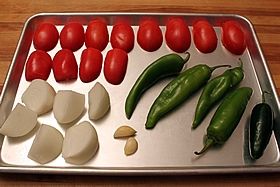
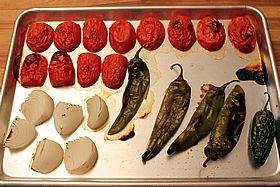
Step 5. As soon as you take the veggies out of the oven, cover them so they can steam (I used another inverted baking sheet as a cover).
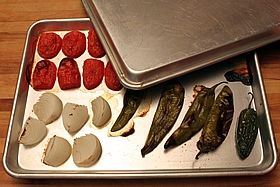
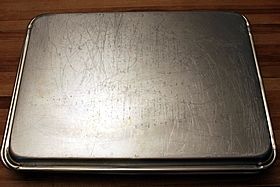
Step 6. The steaming, makes it easy to remove the peels from the chiles and tomatoes.
- Note: If you prefer, you can leave the skin on the roasted tomatoes. Be sure to puree them in a blender or food processor before the other ingredients in order to finely chop the skin.
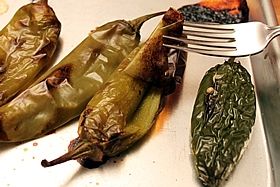
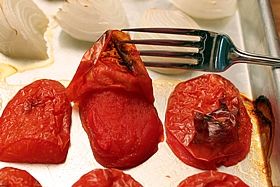
Step 7. In a food processor, add the roasted garlic & onions along with the cilantro. Give it a whirl.
view on Amazon: my food processor
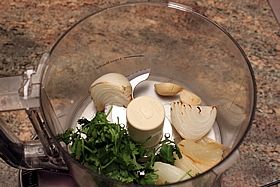
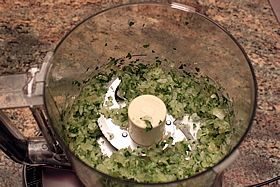
Step 8. Add the roasted chiles, cumin, pepper, oregano, and salt. Give that a whirl.
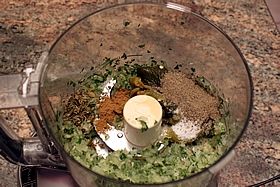
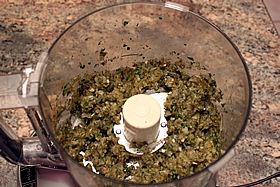
Step 9. Add the tomatoes, lime juice, and vinegar. Process in pulses until it's the texture you want. You decide how chunky you want it to be.
- About the vinegar: The vinegar adds a tang that I think enhances the flavor. It is also necessary as a preservative if you want the salsa to keep awhile in the fridge. It's fine to substitute additional bottled lime or lemon juice in place of the vinegar, if you don't like the taste of vinegar. You can omit or reduce the vinegar/lime juice, if you will be eating the salsa within a few days. The vinegar's intensity will mellow some in a few hours, and even more the next day. That's why I like to make mine a day ahead, when possible.
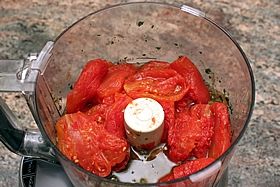
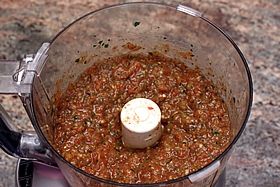
Here's how I like mine.
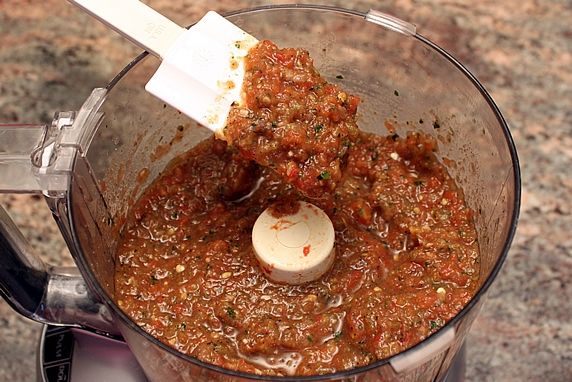
It's ready to eat. Bring on the chips!
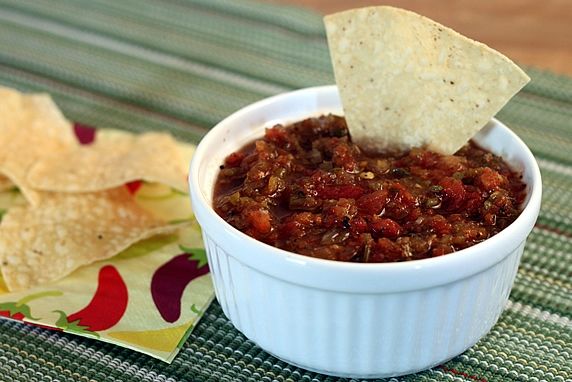
How to make a big batch of
Roasted Salsa for Canning
I use the same ingredients in different quantities in these two recipes. In order to ensure canning safety, you don't have as much flexibility with altering the ingredients. It's important to stick to the recipe regarding the ratio of tomatoes to peppers, onions, lime juice, and vinegar. It's fine to substitute additional bottled lime or lemon juice in place of the vinegar, if you don't like the taste of vinegar. You may, also adjust the seasonings to your taste without compromising safety.
Complete steps 1 thru 6 above, only adjusting the quantities of ingredients. You'll need to chop everything in the food processor in batches--it won't all fit in one batch.
Step 7. Chop the garlic and onions in the food processor and transfer to a 5 quart pot.
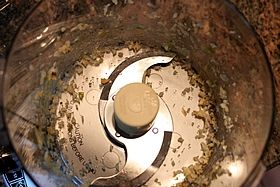
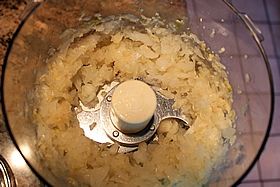
Step 8. Chop the chiles and transfer to the pot.
Step 9. Chop the tomatoes and transfer to the pot.
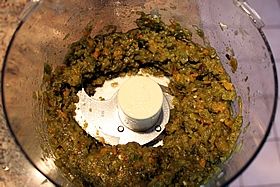
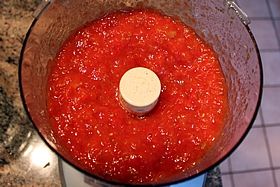
Step 10. Add the seasonings, lime juice, and vinegar to the pot. Stir.
Step 11. Bring this to a boil on top of the stove over medium-high heat; reduce heat and simmer for 15 minutes.
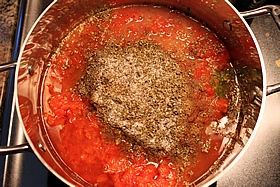
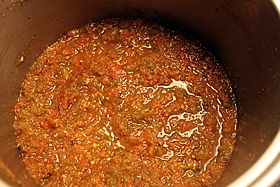
Step 12. FOR WATER PROCESS CANNING: Add hot salsa to hot sterilized jars leaving 1/2" of headspace, and water process in water canner 15 minutes for half pints, 20 minutes for pints. Turn off heat, and leave jars in hot water for 5 minutes. Remove and let rest undisturbed for 12-24 hours.
- About canning safety: Always follow jar preparation and processing recommended by the USDA. If you want more detailed canning information, I recommend the Ball website. They are the ultimate authority, and their site is loaded with detailed information and recipes suited for canning.
For general canning tips, see my previous post,
Step-By-Step Canning Tips
You can get approx. 10 pints of salsa from this big batch recipe.
view on Amazon: pint jars, half-pint jars, water-bath canning kit
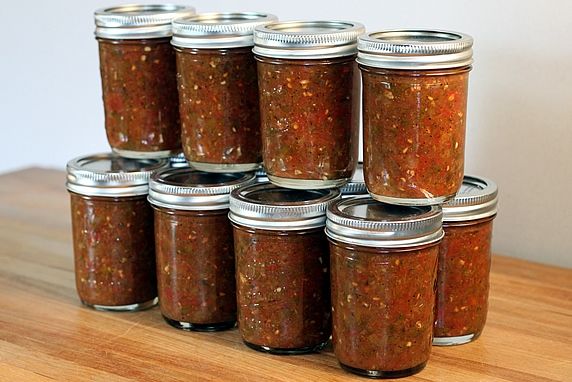
For a finishing touch, I like to label my jars. That way they're easy to identify and organize, and they're ready for gift giving, too.

To use the downloadable tags:
- Print these on card stock, cut them out, punch a hole in the corner, and hang them from the jar neck with a ribbon, string, or rubber band.
- Print them on sticker paper and stick them to the jar lid or side. Or, stick them on with tape.
If you don't have a printer or specialty papers, you can have a store with printing services download and print them for you (Kinkos, Office Depot, Staples, etc.)
Cut with scissors or a circle punch. You can cut the round tags out carefully with scissors, or use a circle punch to make the task easier and more precise. I use a 2-1/4" circle punch; it fits both regular and wide canning lids.
view on Amazon: 2-1/4" circle punch (this fits mason jar lids)
Click on the image below to download & print a full sheet of labels.
Click below for the complete recipes for small and big batches:
View & Print Roasted Salsa recipe (small batch)
View & Print Roasted Salsa for Canning recipe (big batch)
I love having these jars in my pantry so I can pull one out for a quick, delicious snack throughout the year. They make great gifts, too!
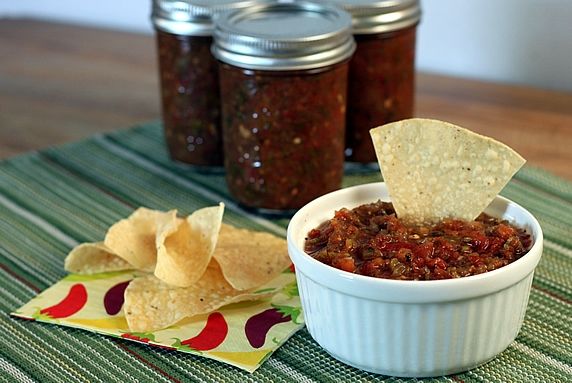
Make it a Yummy day!
Monica
You might also want to check out my recipe for Roasted Salsa Verde.



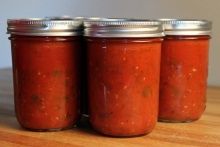

 Pin on Pinterest
Pin on Pinterest